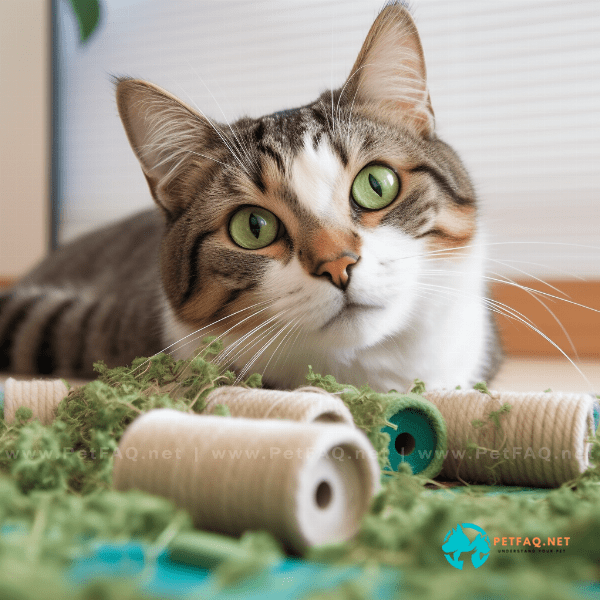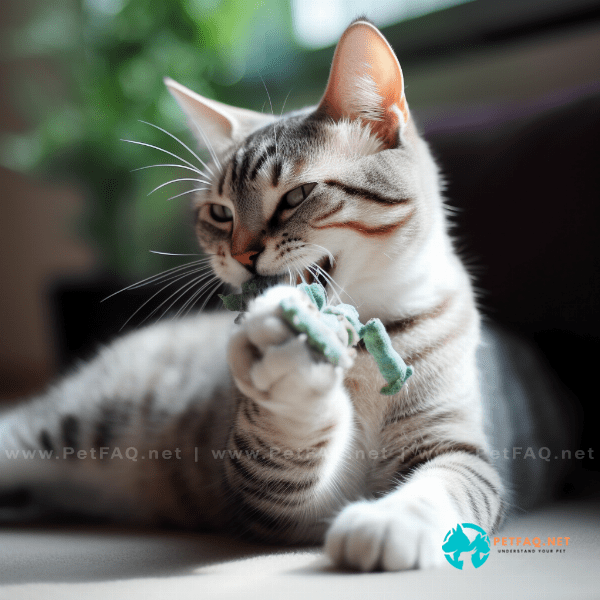Table of Contents
- What is Catnip and Why Do Cats Love it?
- Understanding the Chemical Composition of Catnip
- The Science Behind Catnip’s Effect on Cats’ Brains
- Is Catnip Safe for Cats? Debunking Common Myths and Misconceptions
- How to Administer Catnip Smoke to Your Cat
- Signs Your Cat is Enjoying the Effects of Catnip Smoke
- Catnip Alternatives: Other Natural Remedies for Feline Relaxation
- Potential Risks and Side Effects of Catnip Smoke
- Conclusion: The Benefits and Limitations of Catnip Smoke for Feline Wellness
What is Catnip and Why Do Cats Love it?
Catnip is an herbaceous plant belonging to the mint family. Scientifically known as Nepeta cataria, it is native to Europe, Asia, and Africa but has been naturalized in North America as well. The plant produces a compound called nepetalactone, which is responsible for the distinctive effects it has on cats.
Chemical Composition of Catnip
Nepetalactone is a type of terpenoid that is found in the essential oil of the catnip plant. When cats inhale or ingest this compound, it stimulates certain receptors in their brains, leading to a variety of behaviors that are commonly associated with the plant, such as rolling, rubbing, and vocalizing.
How Catnip Works on Cats’ Brains
When cats smell or consume catnip, the nepetalactone binds to specific receptors in their olfactory bulb, the part of the brain responsible for processing smells. This interaction triggers a release of various neurotransmitters, including dopamine and serotonin, which contribute to the pleasurable effects of Catnip on cats.
Why Do Cats Love Catnip?
While not all cats are affected by catnip, it is estimated that around 70-80% of cats exhibit some kind of response to the plant. The reason for this behavior is not fully understood, but it is believed that it has to do with the similarity between nepetalactone and certain feline pheromones. This similarity may explain why some cats appear to be “addicted” to catnip, seeking out the plant whenever they can.
Catnip Smoke
One popular way to administer catnip to cats is by burning it and letting them inhale the smoke. This method is said to produce a stronger and more immediate reaction than simply giving cats dried or fresh catnip leaves. However, it is important to note that excessive exposure to any smoke can be harmful to cats, so it is recommended to use Catnip smoke sparingly and in a well-ventilated area.
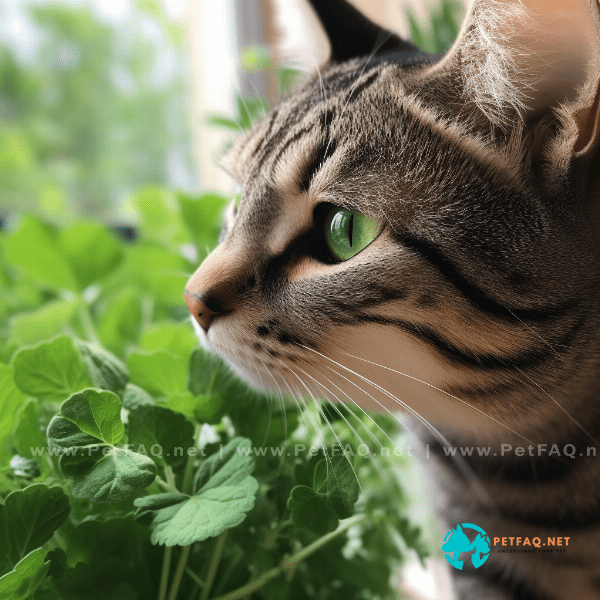
Understanding the Chemical Composition of Catnip
To better understand the effects of catnip on cats, it’s important to look at the plant’s chemical composition. As mentioned earlier, the main active compound in catnip is nepetalactone, which is found in the plant’s essential oil.
Types of Nepetalactone
There are two types of nepetalactone, designated as E-isomer and Z-isomer, and both are present in catnip in varying amounts. The E-isomer is believed to be the more potent of the two, and is responsible for eliciting the strongest response in cats.
Other Compounds in Catnip
In addition to nepetalactone, catnip also contains other compounds such as terpenes, iridoids, and flavonoids. These compounds contribute to the plant’s characteristic scent and flavor, and may also have additional effects on cats. For example, one study found that the flavonoid quercetin, which is present in catnip, can help reduce inflammation and oxidative stress in cats.
Catnip Smoke and Its Effects
When catnip is burned and inhaled, the heat causes some of the nepetalactone and other compounds to break down and release into the air. Inhaling this smoke can have a stronger and more immediate effect on cats compared to simply giving them dried or fresh catnip leaves.
However, it’s important to note that excessive exposure to any smoke can be harmful to cats, including catnip smoke. Inhaling too much smoke can irritate a cat’s respiratory system and cause coughing, wheezing, or other breathing difficulties. As such, it is recommended to use catnip smoke sparingly and in a well-ventilated area.
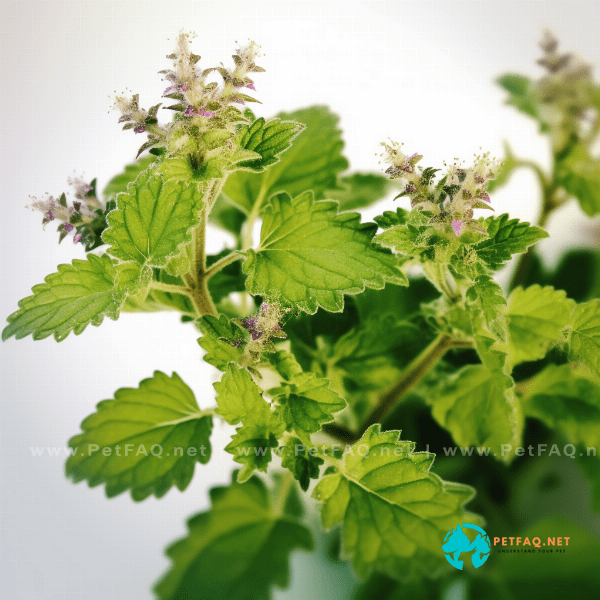
The Science Behind Catnip’s Effect on Cats’ Brains
The effects of catnip on cats’ brains have been studied extensively, with researchers looking at the chemical and neurological mechanisms involved in this phenomenon.
Neurotransmitters Involved
One of the key neurotransmitters involved in catnip’s effects on cats’ brains is dopamine. This chemical is responsible for regulating pleasure and reward in the brain, and is known to play a role in drug addiction as well. When cats are exposed to catnip, their brains release dopamine, leading to the pleasurable effects associated with the plant.
Serotonin is another neurotransmitter that is involved in catnip’s effects on cats. This chemical is responsible for regulating mood, appetite, and sleep, among other functions. Studies have found that when cats are exposed to catnip, their brains release both dopamine and serotonin, which may contribute to the plant’s calming effects on some cats.
Receptors Involved
The effects of catnip on cats’ brains are also mediated by specific receptors in the brain. When cats inhale or ingest catnip, the nepetalactone in the plant binds to certain receptors in the olfactory bulb and the brain’s reward centers, leading to the release of dopamine and other neurotransmitters.
Catnip Smoke and the Brain
When cats inhale catnip smoke, the nepetalactone in the plant enters the nasal passages and binds to the olfactory receptors, triggering the same chemical and neurological responses as when cats smell fresh or dried catnip leaves. However, as mentioned earlier, excessive exposure to any smoke can be harmful to cats, including catnip smoke, so it’s important to use caution when administering catnip in this way.
Overall, the science behind catnip’s effects on cats’ brains is complex and multifaceted, with multiple neurotransmitters and receptors involved in the process. However, it is clear that catnip can have a profound impact on many cats, leading to behaviors that are both entertaining and beneficial for their overall well-being.

Is Catnip Safe for Cats? Debunking Common Myths and Misconceptions
Catnip is generally considered safe for cats, and is not known to have any harmful side effects. However, there are some common myths and misconceptions about catnip that can lead to confusion or concern among cat owners.
Myth #1: Catnip is Addictive and Can Harm Cats
While it is true that some cats appear to be “addicted” to catnip, there is no evidence to suggest that the plant is physically or psychologically addictive for cats. In fact, the effects of catnip typically only last for 5-15 minutes, after which the cat will become desensitized to the plant’s effects for up to several hours.
There is also no evidence to suggest that catnip can harm cats in any way, either through ingestion or inhalation. However, as with any substance, it’s important to use catnip in moderation and monitor your cat’s behavior to ensure they are not experiencing any adverse effects.
Myth #2: Catnip is Only for Young Cats
While it’s true that kittens and young cats are more likely to respond to catnip than older cats, there is no age limit for cats to enjoy the effects of catnip. In fact, some older cats may start to become more responsive to catnip as they age, due to changes in their brain chemistry.
Myth #3: Catnip Smoke is Harmful to Cats
While catnip smoke can be a potent and effective way to administer the plant to cats, it’s important to use caution when using this method. Excessive exposure to any smoke, including catnip smoke, can be harmful to cats and can cause respiratory irritation or other health problems.
To minimize the risk of harm, it’s recommended to use catnip smoke sparingly and in a well-ventilated area. You can also try other methods of administering catnip, such as rubbing the plant on your cat’s toys or scratching post.
Overall, catnip is a safe and enjoyable plant for most cats, and can provide a variety of physical and mental benefits. By understanding the facts and debunking common myths about catnip, you can ensure that your cat can safely and happily enjoy the effects of this beloved plant.
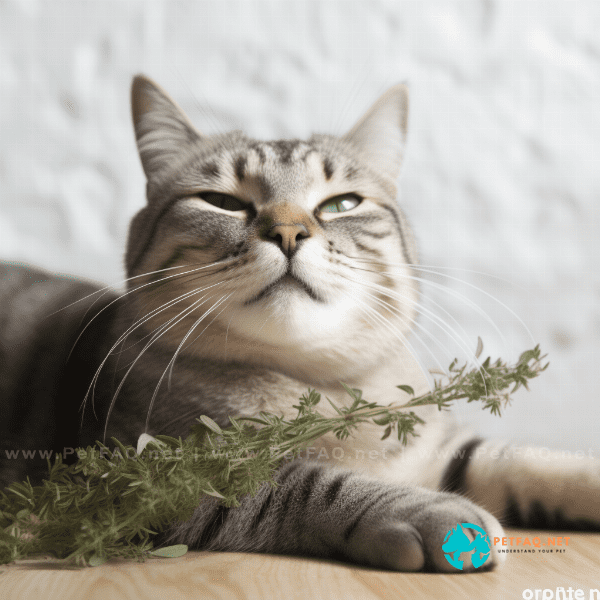
How to Administer Catnip Smoke to Your Cat
Catnip smoke can be a great way to provide your cat with a stronger and more immediate response to the plant. However, it’s important to use caution and follow the proper steps to ensure your cat’s safety and enjoyment.
Step 1: Choose the Right Type of Catnip
When using catnip smoke, it’s important to choose a high-quality, organic product that is free from any additives or chemicals. Look for catnip that is fresh, fragrant, and still contains its essential oils, as this will produce the strongest and most effective smoke.
Step 2: Prepare the Catnip
To prepare catnip for smoking, simply crush the leaves and stems with your fingers or a mortar and pestle. Be sure to remove any woody stems or other debris that could clog the pipe or cause irritation to your cat’s throat.
Step 3: Use a Safe and Effective Smoking Method
There are several methods for administering catnip smoke to your cat, including using a pipe, a vaporizer, or a heated rock. Whatever method you choose, it’s important to use caution and ensure that your cat is not inhaling too much smoke, as this can be harmful to their respiratory system.
Step 4: Observe Your Cat’s Reaction
After administering catnip smoke, observe your cat’s behavior to ensure that they are enjoying the effects and not experiencing any adverse effects. Signs that your cat is enjoying catnip smoke may include rolling, rubbing their face on surfaces, or vocalizing. If your cat shows signs of discomfort, stop using catnip smoke immediately.

Signs Your Cat is Enjoying the Effects of Catnip Smoke
Catnip smoke can have a variety of effects on cats, depending on their individual sensitivities and preferences. However, there are several common signs that your cat is enjoying the effects of catnip smoke.
Increased Activity
One of the most common signs that a cat is enjoying catnip smoke is an increase in activity levels. Cats may become more playful, energetic, and curious after inhaling catnip smoke, chasing toys or exploring their environment with renewed vigor.
Rolling and Rubbing
Another common sign that a cat is enjoying catnip smoke is rolling and rubbing against surfaces. Cats may roll around on the ground or furniture, rub their faces against objects, or even drool or lick excessively while under the influence of catnip smoke.
Vocalizing and Purring
Some cats may also vocalize or purr more than usual when exposed to catnip smoke. This can include meowing, chirping, or even growling in response to the pleasurable effects of the plant.
Increased Relaxation
While catnip is often associated with increased activity and playfulness, some cats may also become more relaxed and calm after inhaling catnip smoke. This can include behaviors such as lounging or sleeping peacefully, as the plant’s calming effects take hold.
Overall, the signs that a cat is enjoying catnip smoke can vary from cat to cat, but are generally characterized by increased activity, rolling and rubbing, vocalizing, and relaxation. By observing your cat’s behavior and responses to catnip smoke, you can better understand their preferences and provide them with the best possible experience with this beloved plant.
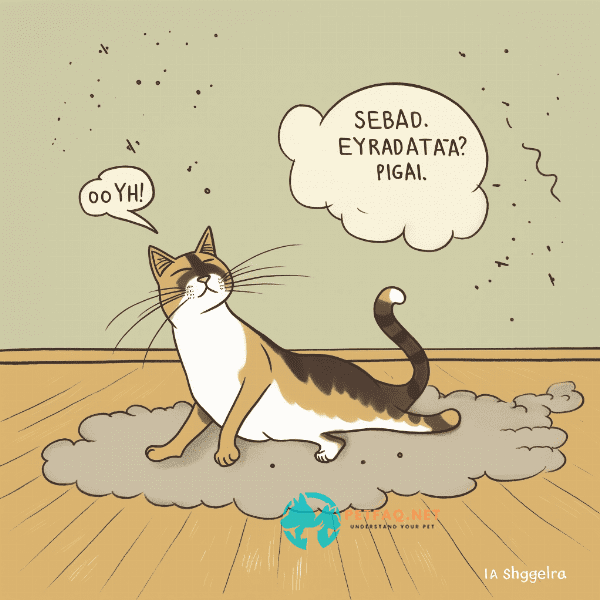
Catnip Alternatives: Other Natural Remedies for Feline Relaxation
While catnip is a popular and effective natural remedy for feline relaxation, there are several other plant-based alternatives that can provide similar benefits to your cat.
Valerian Root
Valerian root is a natural sedative that can help calm and relax cats. It contains compounds that are similar to those found in catnip, but with a stronger effect on the central nervous system. Valerian root can be given to cats in the form of dried or fresh root, or as a supplement in capsule or liquid form.
Chamomile
Chamomile is another natural herb that has been used for centuries to promote relaxation and reduce stress in both humans and animals. It contains compounds that can help calm the nervous system and reduce anxiety. Chamomile can be given to cats in the form of dried flowers or as a tea, although it is important to ensure that the chamomile is not mixed with any other potentially harmful ingredients.
Honeysuckle
Honeysuckle is a plant that is known to have a similar effect on cats as catnip. It contains a compound called nepetalactone, which is also found in catnip, but in lower amounts. Honeysuckle can be given to cats in the form of fresh or dried wood chips or as a spray.
Silver Vine
Silver vine is a plant that is native to Asia and is known to have a similar effect on cats as catnip. It contains a compound called actinidine, which can cause a pleasurable response in cats when they inhale or ingest it. Silver vine can be given to cats in the form of dried leaves or as a powder.
Overall, catnip is not the only natural remedy available for feline relaxation. Valerian root, chamomile, honeysuckle, and silver vine are just a few of the many plant-based alternatives that can provide similar benefits to your cat. By experimenting with different remedies and observing your cat’s behavior, you can find the best natural solution for your feline friend’s relaxation needs.
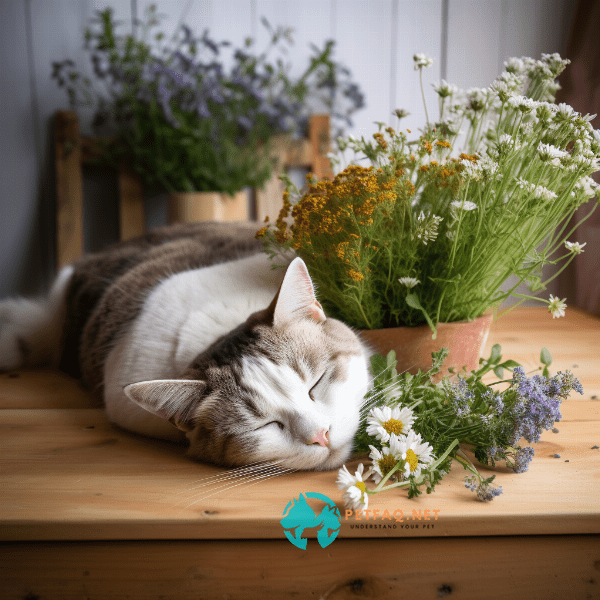
Potential Risks and Side Effects of Catnip Smoke
While catnip is generally considered safe for cats, there are some potential risks and side effects associated with catnip smoke that cat owners should be aware of.
Respiratory Irritation
Excessive exposure to catnip smoke can cause respiratory irritation in cats, especially those with pre-existing respiratory issues such as asthma. This can cause coughing, wheezing, and difficulty breathing.
Overstimulation
Some cats may become overstimulated or agitated when exposed to catnip smoke, leading to excessive vocalization, hyperactivity, or even aggression. This can be particularly problematic in multi-cat households, where overstimulated cats may become aggressive towards other cats or their human caregivers.
Ingestion
If a cat ingests too much catnip, it can lead to gastrointestinal upset, including vomiting and diarrhea. This can be especially concerning if the cat is inhaling or ingesting large quantities of catnip smoke, which can lead to excessive ingestion of the plant.
Addiction
While there is no evidence to suggest that catnip is physically addictive for cats, some cats may become overly reliant on the plant for stimulation and entertainment. This can lead to behavioral issues if the cat is unable to access catnip regularly, or if the cat becomes aggressive or destructive when under the influence of the plant.
Overall, while catnip smoke can be a fun and effective way to provide your cat with the benefits of catnip, it’s important to use caution and monitor your cat’s behavior for any potential risks or side effects. By following the proper guidelines and using catnip in moderation, you can ensure that your cat enjoys a safe and enjoyable experience with this beloved plant.
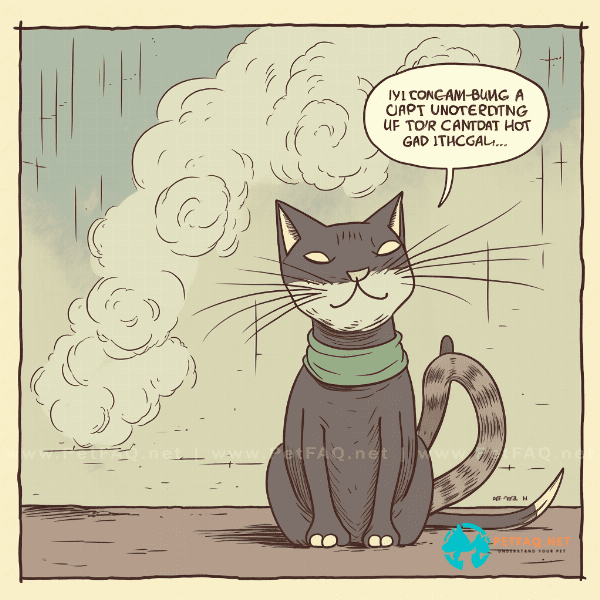
Conclusion: The Benefits and Limitations of Catnip Smoke for Feline Wellness
Catnip smoke can be a fun and effective way to provide your cat with the benefits of catnip, including increased activity, relaxation, and pleasure. However, it’s important to use caution and understand the potential risks and limitations associated with this method of administering catnip.
Benefits of Catnip Smoke
Catnip smoke can provide a more potent and immediate response to the plant, making it ideal for cats that are less responsive to other methods of catnip administration. It can also provide a more intense and pleasurable experience for cats, leading to increased activity, relaxation, and enjoyment.
Limitations of Catnip Smoke
Catnip smoke can be harmful to cats if used excessively or in an uncontrolled manner, leading to respiratory irritation, overstimulation, and other potential risks. It’s also important to note that not all cats will respond to catnip smoke, and some may even be allergic to the plant.
Conclusion
Overall, catnip smoke can be a great tool for promoting feline wellness and relaxation, but it should be used with caution and in moderation. By understanding the benefits and limitations of catnip smoke, you can provide your cat with the best possible experience with this beloved plant. Remember to observe your cat’s behavior and responses to catnip smoke, and always prioritize their safety and well-being above all else.

Frequently Asked Questions (FAQs) about catnip smoke:
1. Is catnip smoke safe for humans to inhale?2. What are the potential risks or side effects of catnip smoke for cats?
3. Is catnip smoke harmful to humans?
4. How long does the effect of catnip smoke last on cats?
5. How is catnip smoke produced?

